Toyota Land Cruiser VS Honda HR-V – Specs, Efficiency & Price Comparison
Which model is the better choice – the Toyota Land Cruiser or the Honda HR-V? We compare performance (205 HP vs 131 HP), boot capacity (742 L vs 319 L), efficiency (10.30 L vs 5.40 L), and of course, the price (58300 £ vs 29700 £).
Find out now which car fits your needs better!
The Toyota Land Cruiser (Off-Roader) is powered by a Diesel engine and comes with a Automatic transmission. In comparison, the Honda HR-V (SUV) features a Full Hybrid engine and a Automatic gearbox.
When it comes to boot capacity, the Toyota Land Cruiser offers 742 L, while the Honda HR-V provides 319 L – depending on what matters most to you. If you’re looking for more power, you’ll need to decide whether the 205 HP of the Toyota Land Cruiser or the 131 HP of the Honda HR-V suits your needs better.
There are also differences in efficiency: 10.30 L vs 5.40 L. In terms of price, the Toyota Land Cruiser starts at 58300 £, while the Honda HR-V is available from 29700 £.
Compare all the key specs now and find out which model fits your lifestyle best!
Toyota Land Cruiser
The Toyota Land Cruiser is renowned for its robust durability and exceptional off-road capabilities. Its design combines a rugged exterior with a comfortable and functional interior, appealing to both adventure seekers and city drivers. The vehicle's reliability and advanced technology make it a popular choice for those who require a dependable SUV that can handle a variety of terrains with ease.
details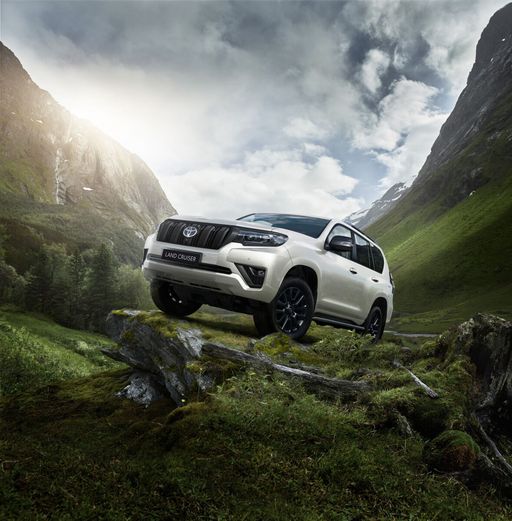 @ Toyota
@ Toyota
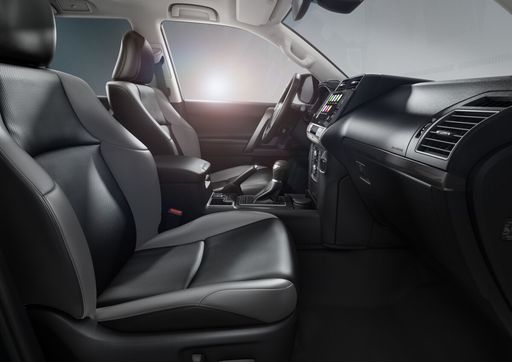 @ Toyota
@ Toyota
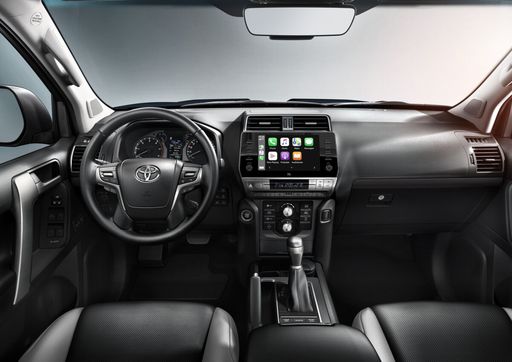 @ Toyota
@ Toyota
Honda HR-V
The Honda HR-V impresses with its sleek design, combining a dynamic exterior with a comfortable and spacious interior. This versatile compact SUV offers a smooth and responsive driving experience, making it ideal for both city commuting and weekend adventures. Equipped with advanced safety features and technology, the HR-V ensures a connected and secure journey for all passengers.
details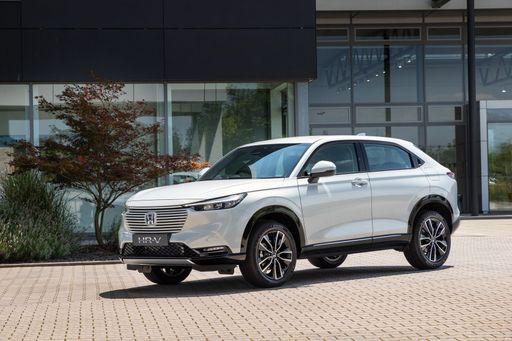 @ hondanews.eu
@ hondanews.eu
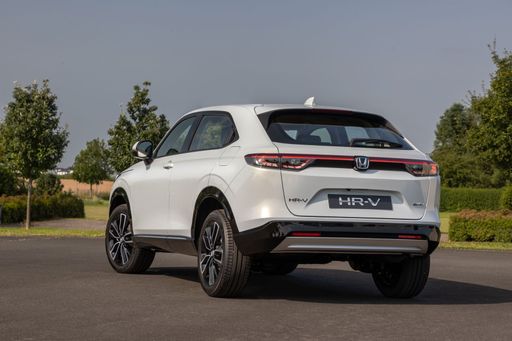 @ hondanews.eu
@ hondanews.eu
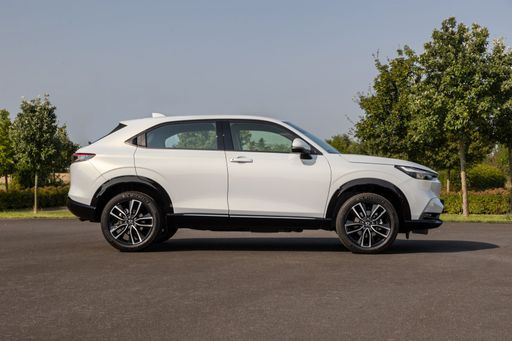 @ hondanews.eu
@ hondanews.eu
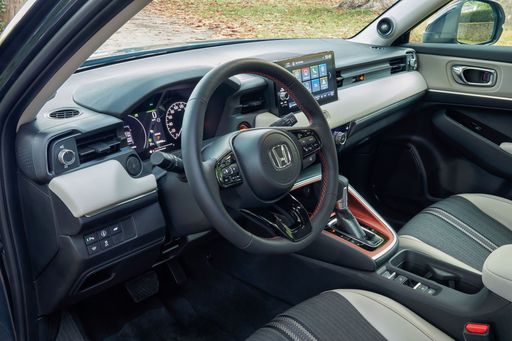 @ hondanews.eu
@ hondanews.eu

|

|
|
|
|
Costs and Consumption |
|
|---|---|
|
Price
58300 - 78400 £
|
Price
29700 - 35400 £
|
|
Consumption L/100km
10.30 L
|
Consumption L/100km
5.40 L
|
|
Consumption kWh/100km
-
|
Consumption kWh/100km
-
|
|
Electric Range
-
|
Electric Range
-
|
|
Battery Capacity
-
|
Battery Capacity
-
|
|
co2
272 g/km
|
co2
122 g/km
|
|
Fuel tank capacity
80 L
|
Fuel tank capacity
40 L
|
Dimensions and Body |
|
|---|---|
|
Body Type
Off-Roader
|
Body Type
SUV
|
|
Seats
5
|
Seats
5
|
|
Doors
5
|
Doors
5
|
|
Curb weight
2410 - 2550 kg
|
Curb weight
1452 kg
|
|
Trunk capacity
130 - 742 L
|
Trunk capacity
319 L
|
|
Length
4925 mm
|
Length
4355 mm
|
|
Width
1980 mm
|
Width
-
|
|
Height
1935 mm
|
Height
1582 mm
|
|
Payload
600 - 690 kg
|
Payload
418 kg
|
Engine and Performance |
|
|---|---|
|
Engine Type
Diesel
|
Engine Type
Full Hybrid
|
|
Transmission
Automatic
|
Transmission
Automatic
|
|
Transmission Detail
Automatikgetriebe
|
Transmission Detail
-
|
|
Drive Type
All-Wheel Drive
|
Drive Type
Front-Wheel Drive
|
|
Power HP
205 HP
|
Power HP
131 HP
|
|
Acceleration 0-100km/h
-
|
Acceleration 0-100km/h
10.6 - 10.8 s
|
|
Max Speed
170 km/h
|
Max Speed
170 km/h
|
|
Torque
500 Nm
|
Torque
253 Nm
|
|
Number of Cylinders
4
|
Number of Cylinders
4
|
|
Power kW
151 kW
|
Power kW
96 kW
|
|
Engine capacity
2755 cm3
|
Engine capacity
1498 cm3
|
General |
|
|---|---|
|
Model Year
2024
|
Model Year
2025
|
|
CO2 Efficiency Class
G
|
CO2 Efficiency Class
D
|
|
Brand
Toyota
|
Brand
Honda
|
Toyota Land Cruiser
Introducing the Toyota Land Cruiser: A Legend Reinvented
The Toyota Land Cruiser is a name synonymous with reliability, durability, and off-road prowess. The latest iterations continue this legacy while incorporating cutting-edge technology and refined engineering to meet the demands of modern adventurers. Whether you're navigating rugged terrains or cruising city streets, the Land Cruiser promises an unparalleled driving experience.
Innovative Engineering and Powertrain
Under the bonnet, the Land Cruiser offers a 2.8-litre D-4D diesel engine, delivering an impressive 204 PS. This robust engine ensures a blend of power and efficiency, capable of handling any terrain with ease. Available in both manual and automatic transmissions, the vehicle caters to a wide range of driving preferences. With a torque ranging from 420 to 500 Nm, it provides enough grunt to tackle the most challenging conditions.
Performance and Efficiency
The Land Cruiser exhibits remarkable performance, accelerating from 0 to 100 km/h in just 9.9 seconds in select variants. Despite its formidable capabilities, the vehicle manages to maintain a commendable fuel consumption rate, ranging from 8.7 L/100km to 13.4 L/100km, depending on the configuration. The model achieves a maximum speed of 175 km/h, demonstrating its competence on both highways and off-road trails.
Design and Dimensions
Standing at a length between 4395 mm and 4920 mm, the Land Cruiser strikes a balance between robust stance and practical urban driving. Its width ranges from 1885 mm to 1980 mm, and it features a height between 1830 mm and 1870 mm. The SUV offers both three-door and five-door configurations, accommodating diverse lifestyle needs. Its spacious interior can be configured to seat between five to seven passengers, ensuring comfort on long journeys.
Off-Road Capability and Utility
Renowned for its off-road credentials, the Land Cruiser is equipped with a sophisticated all-wheel-drive system. It features a high ground clearance, allowing it to traverse uneven terrains without difficulty. The vehicle's payload capacity ranges from 495 kg to 770 kg, and its ample boot space — ranging from 104 L to 1151 L — caters to adventurous excursions as well as everyday practicalities.
Technological Features and Innovations
The latest Land Cruiser models are outfitted with advanced technological features designed to enhance both comfort and safety. From state-of-the-art infotainment systems to cutting-edge driver assistance technologies, this SUV ensures a connected and secure driving experience. With a range of trim levels available, including Executive and First Edition variants, the Land Cruiser offers a suite of luxury amenities tailored to discerning drivers.
Sustainability and Environmental Considerations
While the Land Cruiser is engineered for performance, Toyota also takes environmental impact into account. The models feature CO2 emissions ranging from 227 g/km to 288 g/km and a fuel efficiency rating classified under CO2-efficiency class G. These efforts reflect Toyota's commitment to reducing the environmental footprint of its vehicles while delivering unparalleled capability.
Conclusion: A Timeless Companion
The Toyota Land Cruiser remains an indomitable force in the world of four-wheel drives, combining enduring reliability with modern innovation. Whether it's exploring untamed wilderness or making a statement on urban roads, the Land Cruiser stands as a testament to Toyota’s engineering excellence. For adventurers seeking uncompromised performance and luxury, the Land Cruiser is poised to be a steadfast companion for years to come.
Honda HR-V
Exploring the Honda HR-V: A Testament to Innovation
The Honda HR-V epitomises the harmonious blend of SUV practicality and hybrid innovation. This remarkable model offers a compelling choice for those seeking a vehicle that is as environmentally conscious as it is versatile. Let's delve into the technical prowess and innovative features that make the HR-V a standout in its class.
Powerful Yet Efficient Hybrid Technology
At the heart of the Honda HR-V is its 1.5 i-MMD e:HEV full-hybrid powertrain. This advanced system delivers a robust 130 PS (96 kW) while maintaining an impressive fuel consumption of just 5.4 L/100km. The HR-V achieves this through its continuously variable transmission (CVT), which optimises efficiency by adjusting seamlessly to driving conditions. The combination results in a smooth yet responsive drive, marking a significant achievement in hybrid technology.
Design and Practicality
The HR-V seamlessly blends elegant design with practical functionality. Measuring 4340 mm in length and 1582 mm in height, it provides ample cabin space while maintaining a compact footprint. Inside, the HR-V comfortably seats five passengers, ensuring a pleasant journey for both driver and passengers. The boot space, ranging from 320 to 335 litres, offers flexibility for various cargo needs.
Performance and Responsive Handling
With a maximum torque of 253 Nm, the HR-V delivers remarkable performance. Its front-wheel-drive system paired with a CVT offers a refined driving experience. The model is capable of accelerating from 0 to 100 km/h in a respectable 10.6 to 10.7 seconds, and can reach a maximum speed of 170 km/h. Despite its performance capabilities, the HR-V remains an eco-conscious choice with CO2 emissions of 122 g/km.
Comfort and Sophisticated Interiors
The Honda HR-V is available in three distinct trims - Advance e-CVT, Advance Style e-CVT, and Elegance e-CVT, each offering a host of features to enhance comfort and convenience. From the quality of materials to the thoughtful layout of controls, every aspect of the HR-V’s interior is designed to offer a superior driving experience. Furthermore, its fuel tank capacity of 40 litres ensures you'll spend more time on the road and less at the pump.
Cost Efficiency and Environmental Consideration
Beyond its technical specifications, the Honda HR-V promises efficient running costs. The estimated monthly cost ranges from €1002 to €1064, with the cost per kilometre ranging between 40.1 to 42.6 cents. This makes it not only an environmentally friendly choice but an economically sensible one as well, especially for those cognisant of their carbon footprint. It carries a CO2 efficiency class of D, affirming its commitment to reduced emissions.
Final Thoughts
The Honda HR-V stands as a testament to how modern SUVs can be both innovative and practical. Its combination of hybrid technology, responsive power, and thoughtful functionality make it a compelling choice for those in search of sustainability without compromising on performance or comfort. As Honda continues to push the boundaries of what's possible, the HR-V ensures you are at the forefront of automotive innovation.
The prices and data displayed are estimates based on German list prices and may vary by country. This information is not legally binding.
